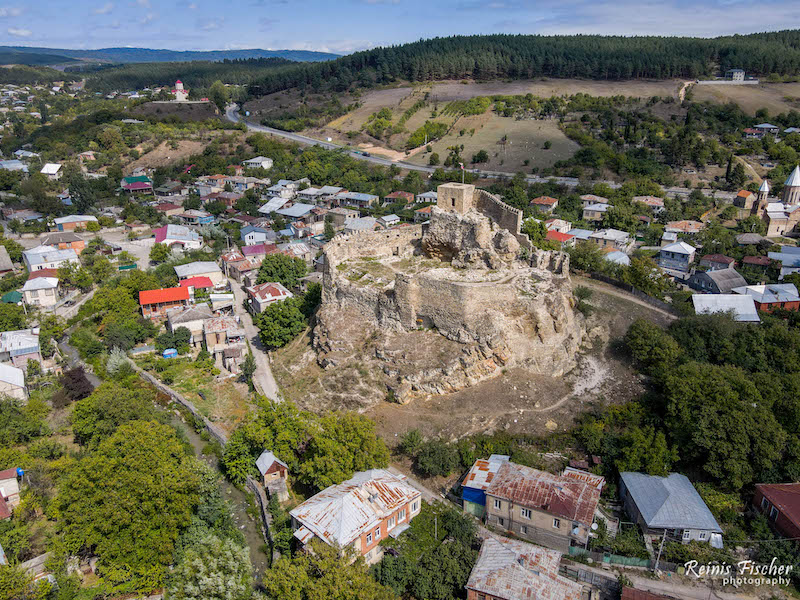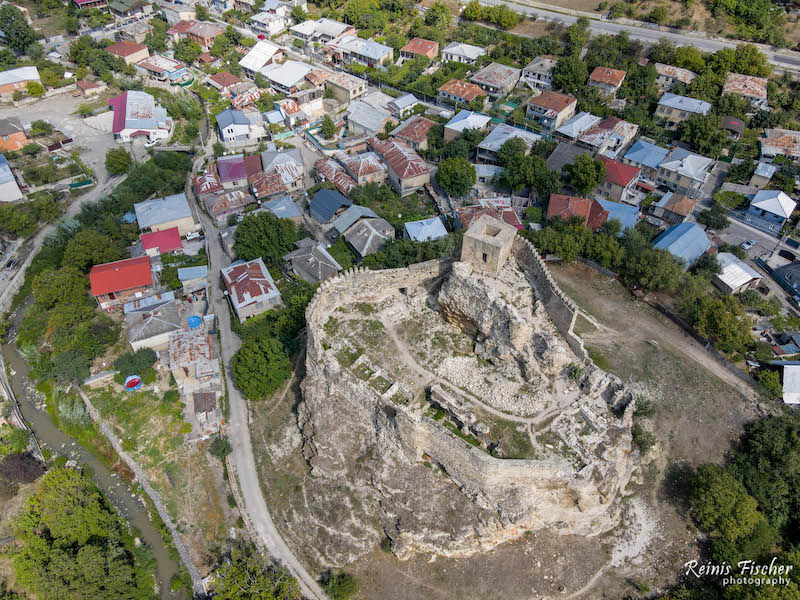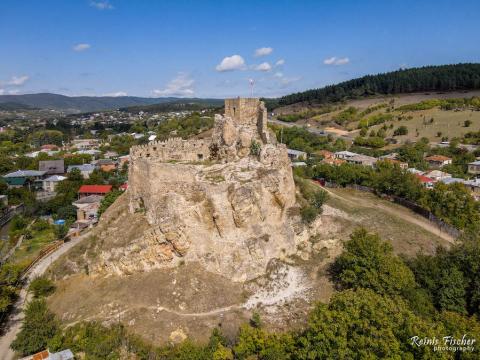Surami Fortress is located in the town of Surami, not far from Khashuri. The fortress itself is located on a rocky mountain.
If you have been traveling arund Georgia, especially by the Tbilisi - Kutaisi - Batumi road, you probably have noticed this fortress, as I do. Actually I've been passing by this place quite often, but bever actually visited. Now, I decided to change that, and when returining from Kutaisi made a quick stop here, to fly a drone around, and learn that Surami is quite an interesting little town.

The fortress is an important work of historical, monumental art. Surami Castle is located at the crossroads of two main roads; One goes west through the Likhi Passes and the other goes south through the Borjomi Gorge.
Surami fortress is a complex, which includes a fence-fortress, St.George's Church, a tower and a palace. The castle had a tunnel that runs down to 12-16 meters, down, it is blocked. According to legend, the castle was connected to the Ascension's Church and the Suramula River, from where drinking water was brought to the prison.

It is historically unknown who and when constructed Surami Fortress "on top of a high rock". According to the 19th-century Georgian historian Platon Ioseliani, Surami and its fortress were built by King Parnavaz in the first half of the 2nd century, 200 BC. Among Georgian historical sources, only Platon Ioseliani gives such a different date of the construction of Surami Fortress.
According to Georgian historical sources, Surami Fortress as a strategic spot has been mentioned since 1625, when it was fortified by Giorgi Saakadze to defend himself from the Iranians.
In 1692, Surami Castle was in Turkish hands; After their banishment, during the interregnum, the Suram Fortress was the main stronghold for the fighters against Iran. In the uprising against the Iranians, in 1742-45, Surami Fortress became the main stronghold of Givi Amilakhvari, the head of the administrative division of Zemo Kartli. Because of the change of the political situation, the rebels found themselves in the camp of opponents of Teimuraz II and Erekle II, supported by Nadir-Shah. The kings, despite being backed by Iran, were unable to capture the fortress of Surami. Teimuraz's negotiations, Shah’s firman of forgiveness, throwing grenades to the prison, nothing worked.
The Shah was so astonished by this fact that he sent an artist to paint the castle. When the picture of the prison was brought, he ordered: enclose the castle by a fence to stop all movement and do not lift the siege until they beg you. Then the castle was secretly blown up twice and a large part of the wall was demolished. Even though the door was almost smashed in, Amilakhvar still did not give up and demanded the queen's arrival: he said h would only trust her. After the arrival of Queen Tamar, the kings were given an oath of safety. Amilakhvari was brought to the city and appointed at a high-ranking position. This fact demonstrates how strong the Suram Fortress was in the XVIII century. Nadir-Shah still did not fully trust Amilakhvar and by his order, the fortress of Suram was destroyed. But the Georgians soon rebuilt the Surami fortress, and in 1756 Erekle II captured here Tamaz, Mouravi of Kiziki. Surami Fortress was owned by Georgians until 1783. Then a Russian garrison was stationed here. In 1792, in Erekle II's "will", the Surami fortress is mentioned among the greatest fortresses of Georgia. According to 1801 sources, the castle still came in operation. In the 19th century, it gradually lost its importance along with other fortresses in Georgia.

